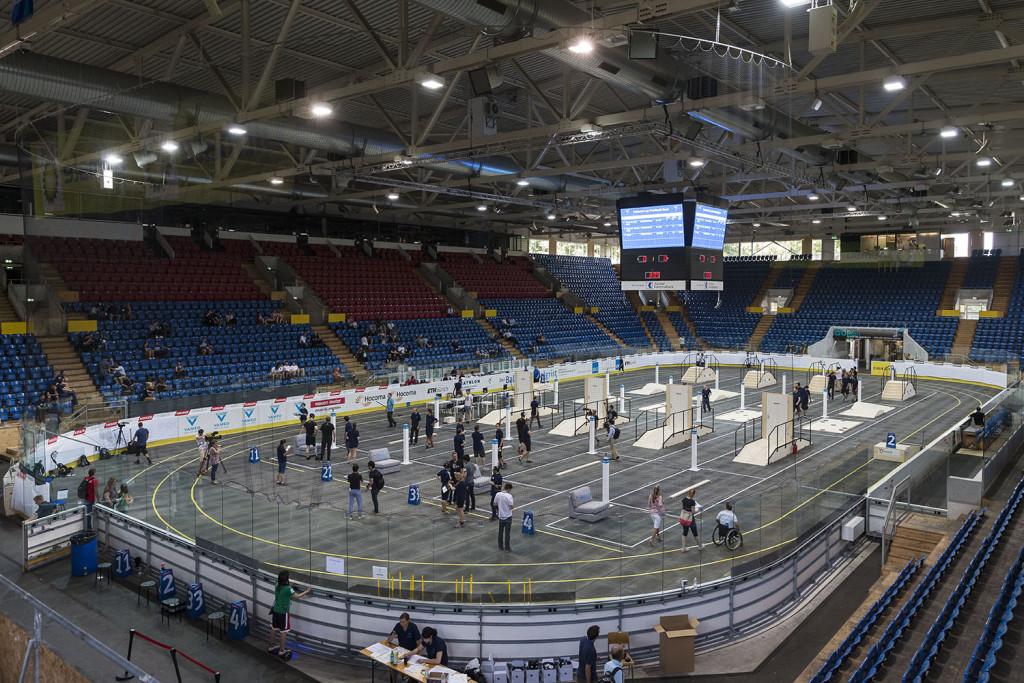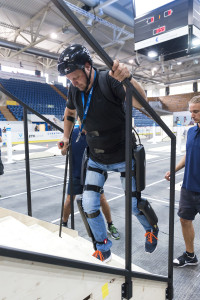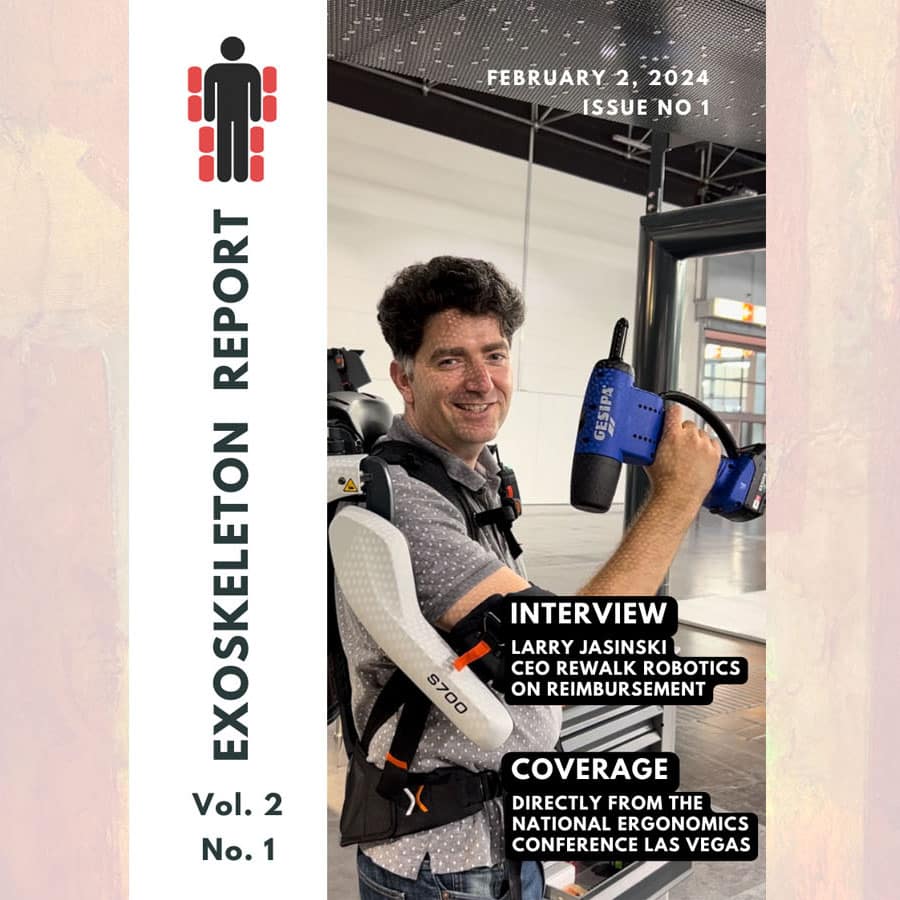The Cybathlon, or Cyber-Athlon, is a dedicated competition for people with disabilities and their mobility enabling devices. The Cybathlon will be held on the 8th of October 2016 in the Swiss Arena in Zurich, Switzerland. The event is organized by the Swiss Federal Institute of Technology in Zurich (ETH Zurich). Hocoma, the maker of the Lokomat and other stationary rehabilitation exoskeletons is a main sponsor of the event.
Cybathlon Introduction Video:
The Cybathlon will consist of six disciplines:
- Brain-Computer Interface Race – pilots drive a virtual vehicle using only brain interface devices.
- Functional Stimulation Bike Race – pilots with a lower body paralysis compete in a bike race on a 1km track pedaling using Functional Electric Stimulation for propulsion only.
- Powered Arm Prosthetic Race – consisting of two parts, competitors with a passive or powered prosthetic first race to complete common daily tasks followed by completion of abstract tasks that challenge the artificial limb.
- Powered Leg Prosthetic Race – more in the spirit of the latest DARPA challenge than a race, pilots with leg prostheses are timed completing six tasks: climbing a ramp and opening a door, walking on a beam, flat stones, a tilted path, sitting and standing on a sofa, and navigating stairs.
- Powered Exoskeleton Race – pilots with spinal cord injury are timed competing the same tasks as the powered leg prosthetic race (above).
- Powered Wheelchair Race – pilots in powered wheelchairs are timed navigating common day obstacles.

Details on the Exoskeleton Race
There are a total of six tasks of various worth that exoskeleton operators can attempt to complete:
Sit and Stand on a Sofa (1 point)
The operator of the exoskeleton needs to sit down and stand up from a couch once. The entire body weight must rest on the couch while sitting. The use of hands is allowed and this is a common task shown at trade shows and commercial videos, so it is the task that awards the fewest points.
Beam (2 points)
The beam is a 3ocm (1 foot) wide path that is slightly elevated above the ground. The beam represents an exoskeleton user having to walk between obstacles or on a narrow path. This tests the ability of the wearable powered device to stay on course.
Ramp and Door (4 points)
This task is much trickier than it first appears. The door has to be opened and closed, but the door is part of the ramp so the exoskeleton operator has to climb to the door, open it and step backwards and sideways to get out of the door’s way and close it behind them. The ramp has a 15 and 20 degree incline on either end which by itself should not be too difficult to climb or descent.
Flat Stones (8 points)
Sometimes when a person walks, there will be obstacles and they will be able to step on only a few select spots. The flat stones simulate such a challenging environment. Some of the stones are really far away from each other in a non-linear pattern and this will definitely be challenging for the exoskeleton pilots.
Tilted Path (15 points)
Tilted path is a benign name that hides how challenging this obstacle is. There isn’t just one slope but multiple slopes in different directions and magnitudes. This will definitely present a significant change to exoskeletons (I have never seen a single video of an exoskeleton for people with spinal cord injury on such an uneven surface.)

Stairs (30 points)
Six stairs up and six down. Many current medical exoskeletons have no hope of navigating them, yet this is such an important daily task.
The DARPA challenges over the years have stimulated creativity and pushed teams to research and develop systems (self driving cars, utility robots) that can function outside the laboratory and in the real world. Perhaps the Cybathon will help exoskeleton research labs and companies to focus their attention on specific, useful tasks for the next 1-3 years.
The Cybathon is in October 8th 2016 and you can find more information at the Cybathon website.



3 Comments